What Happened Inside Predjama Castle’s Torture Chamber, The Most Chilling Place In The Fortress
Predjama Castle, also known as Predjamski grad or grad Predjama in Slovene, is a stunning Renaissance castle built in the mouth of a cave complex at the end of a valley in Slovenia.
The castle is located in the village of Predjama, just 11 kilometers from Postojna and 9 kilometers from the famous Postojna Cave.
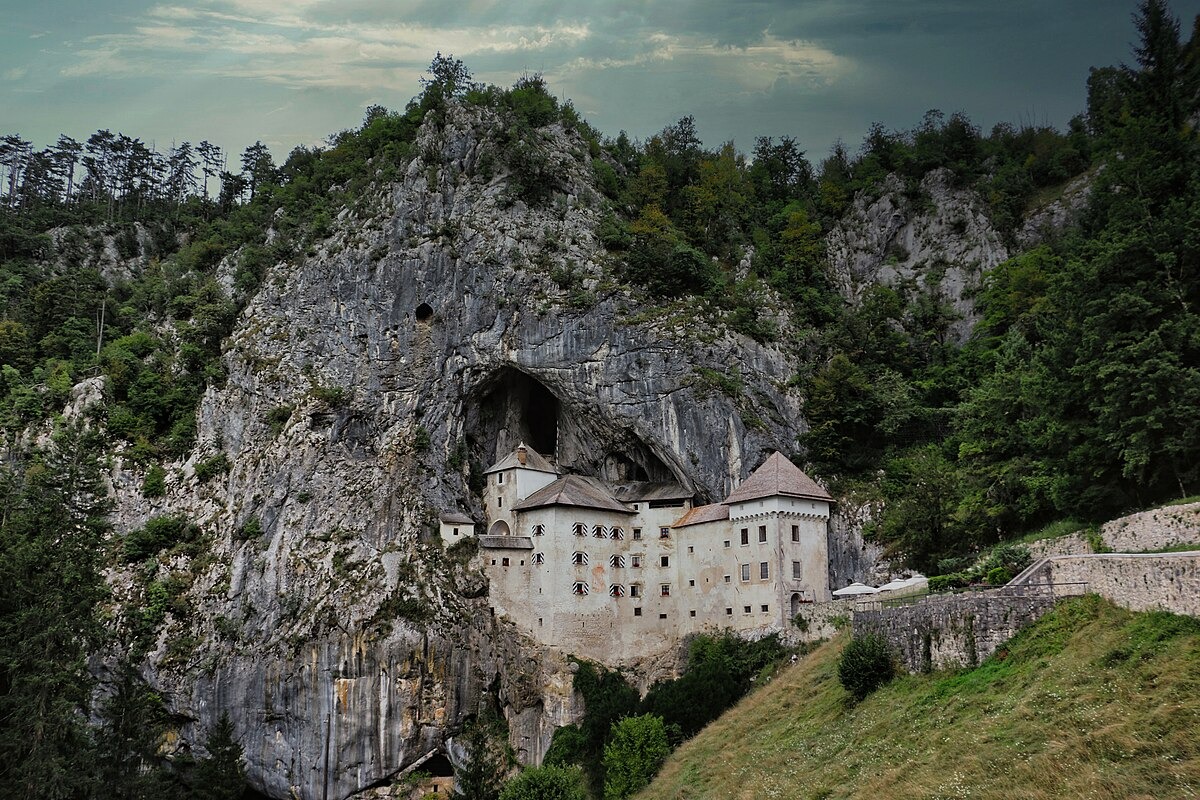
A Brief History of the Predjama Castle
Predjama Castle was first documented in 1274, under the German name Luegg.
It was initially constructed in the Gothic style by the Patriarch of Aquileia.
The castle’s strategic location under a natural rocky arch high in a stone wall made it a formidable stronghold.
Over time, it was acquired and expanded by the Luegg noble family, also known as the Knights of Adelsberg.
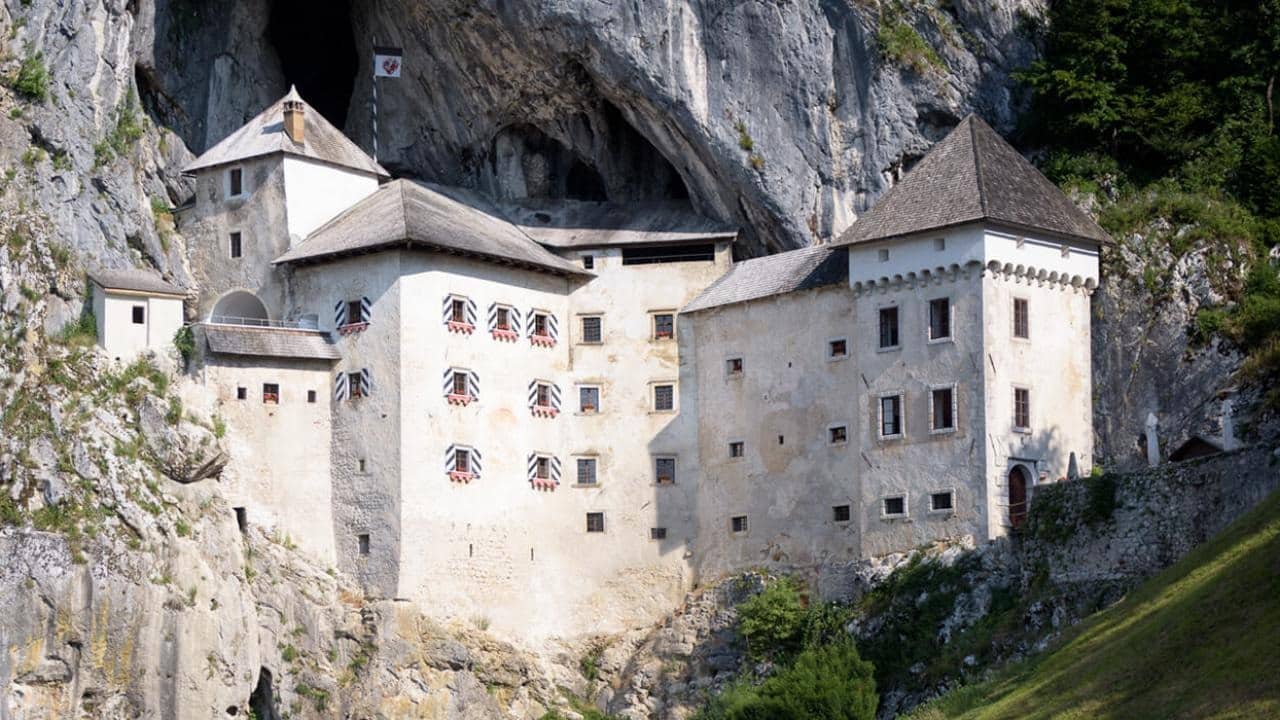
The Legend of Erasmus of Lueg
One of the castle’s most renowned residents was the 15th-century knight Erasmus of Lueg (Erazem Lueger), a notorious robber baron and son of the imperial governor of Trieste, Nikolaj Lueger.
According to legend, Erasmus had a conflict with the Habsburgs after killing an imperial army commander, Marshal Pappenheim.
The commander insulted Erasmus’s deceased friend, Andrej Baumkircher of Vipava.
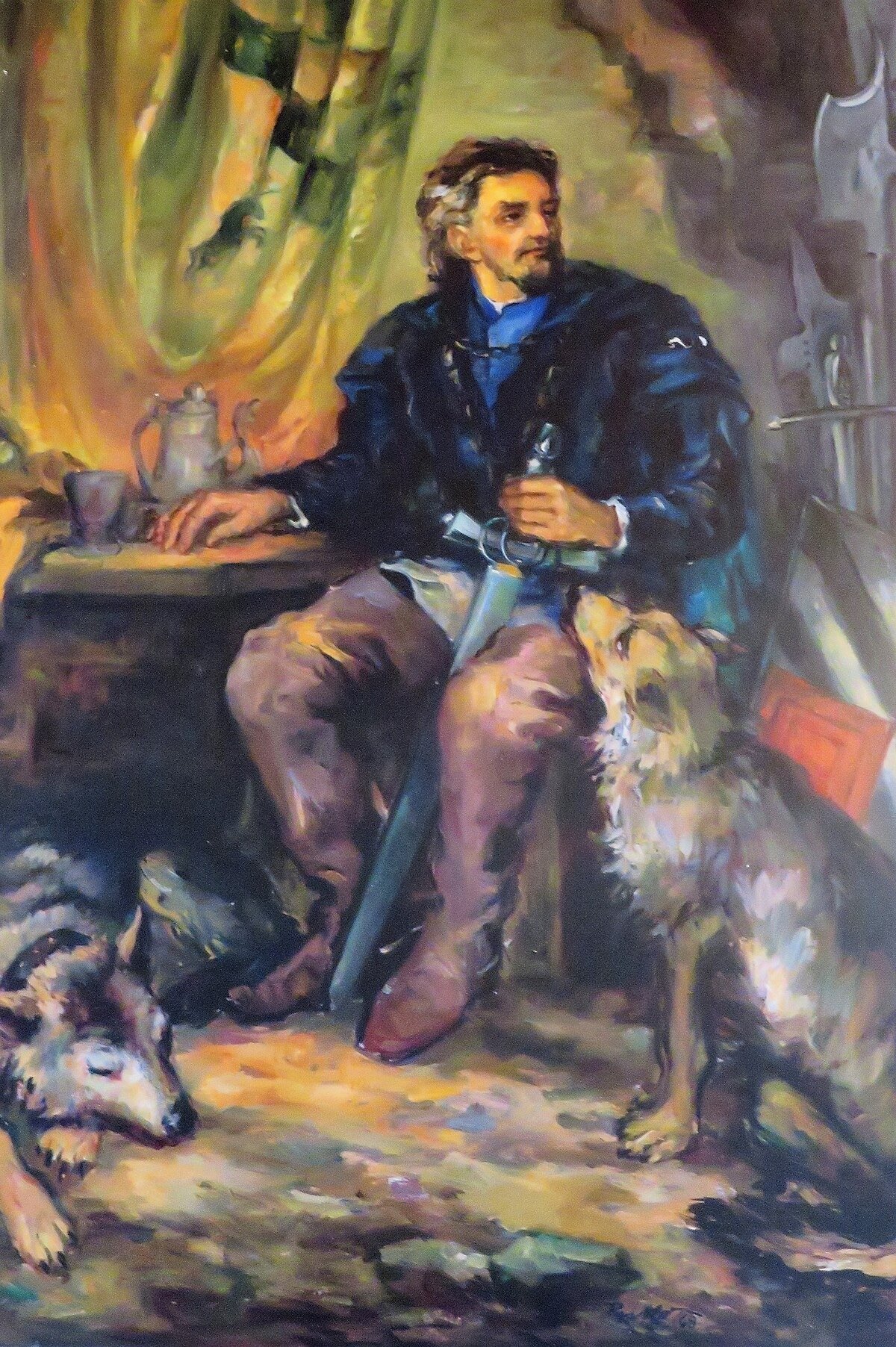
To escape the wrath of Holy Roman Emperor Frederick III, Erasmus sought refuge in his family fortress of Predjama.
From there, he allied himself with King Matthias Corvinus of Hungary and continued his raids against Habsburg estates and towns in Carniola.
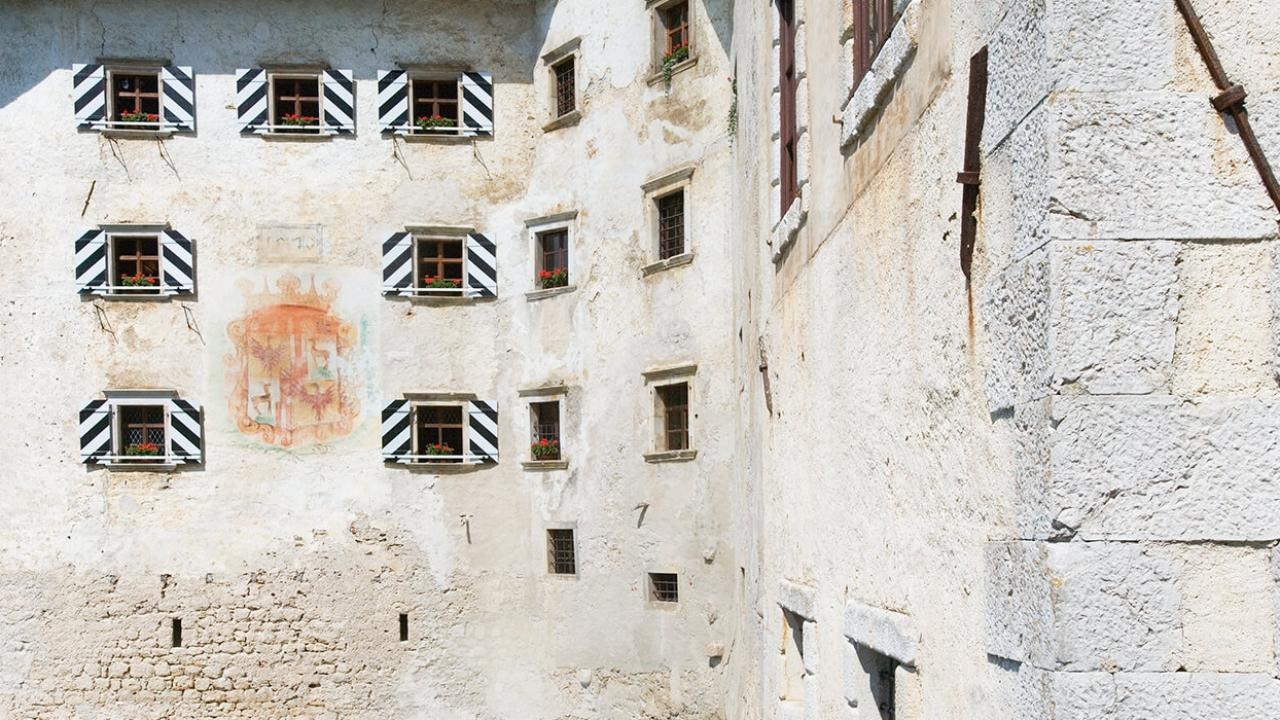
According to legend, Erasmus was betrayed by a servant and killed by a cannon shot while in his lavatory.
Erasmus’s resistance came to a tragic end after a prolonged siege led by Andrej Ravbar, the governor of Trieste.
As the legend goes, Erasmus was betrayed by a servant and was killed by a cannon shot while using his lavatory.
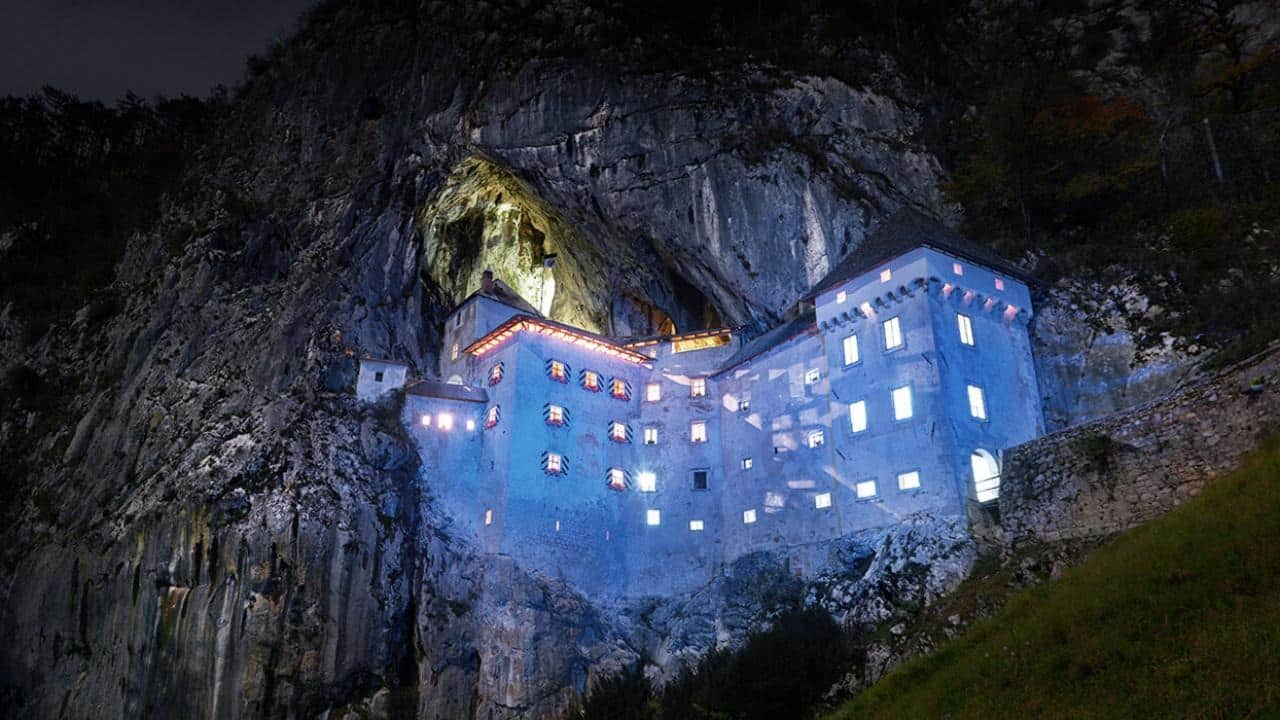
The Hidden Passageway
One of the castle’s most fascinating features is a vertical natural shaft that Erasmus had enlarged.
This secret passage allowed him to smuggle supplies into the castle and maintain his raids despite the siege.
The passage is located at the top of the cliff, 25 meters from the edge.

Rebuilding and Renaissance Transformation
After the original castle was destroyed, its ruins were acquired by the Oberburg family.
A second castle built in the early 16th century was destroyed by an earthquake in 1511.
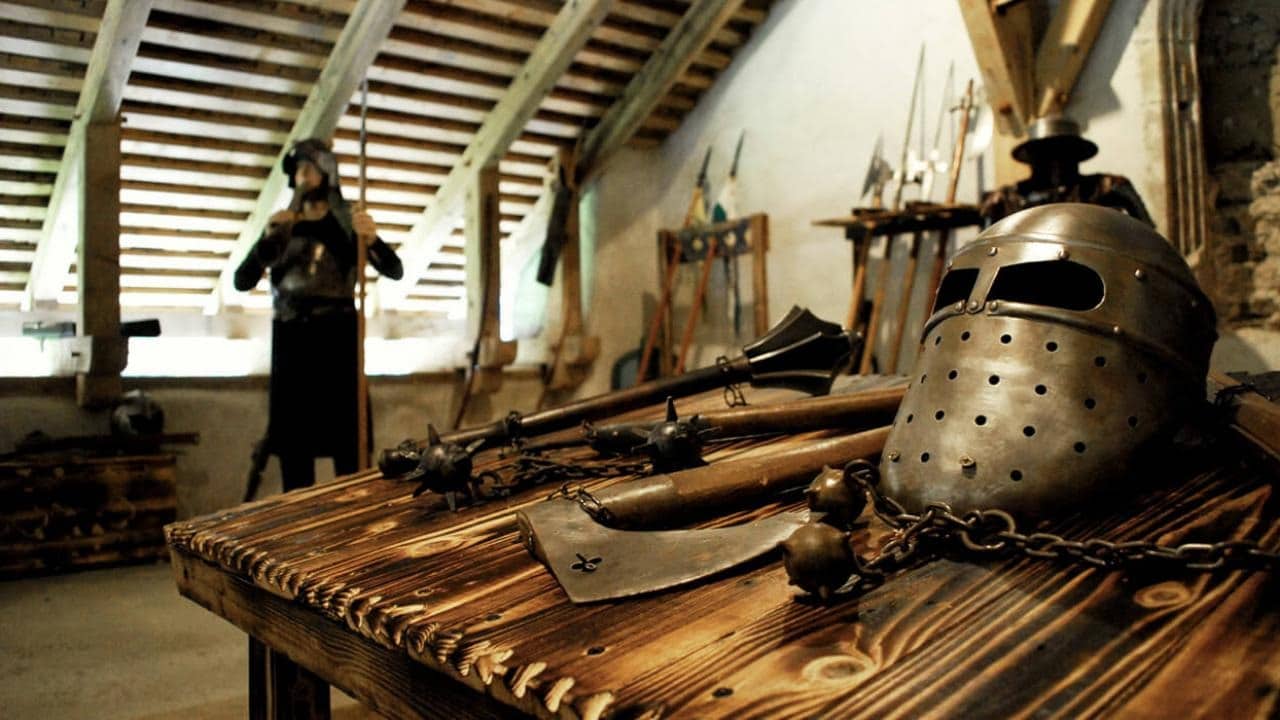
In 1567, Archduke Charles of Austria leased the castle to Baron Philipp von Cobenzl, who later bought it.
The current castle was built in 1570 in the Renaissance style, pressed against a vertical cliff under the original fortification.
This version of the castle has remained almost unchanged.
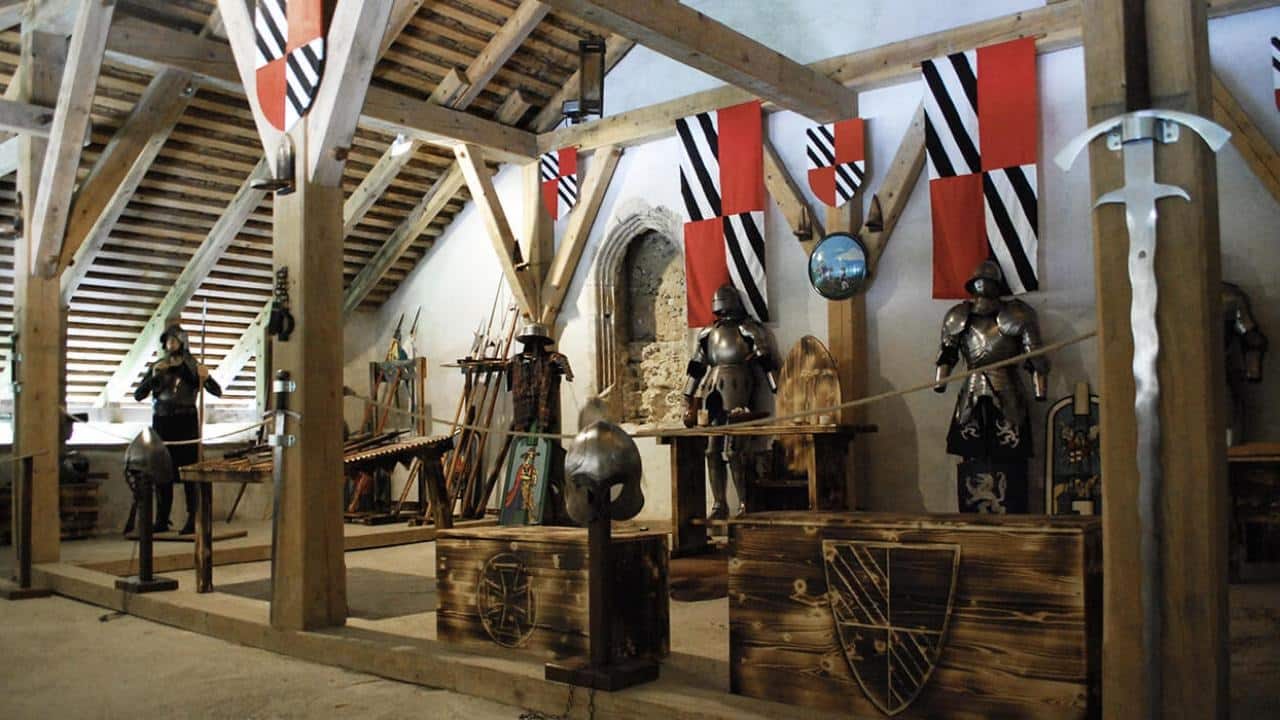
In the 18th century, the Cobenzl family used the castle as a summer residence.
In 1810, it was inherited by Count Michael Coronini von Cronberg, and in 1846, it was sold to the Windischgrätz family.
The castle was nationalized after World War II and turned into a museum.

Today, Predjama Castle is a popular tourist attraction
Visitors can explore its corridors, rooms, and the extensive limestone cave system behind it.
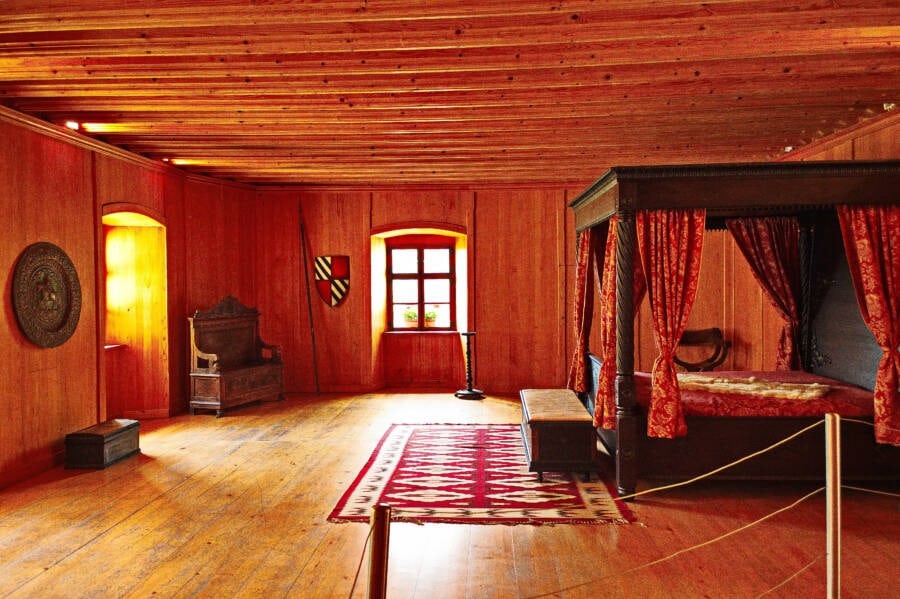
Visitors can walk across the drawbridge into the courtroom, view the torture chamber, and marvel at the six-feet-thick walls that have withstood the test of time.
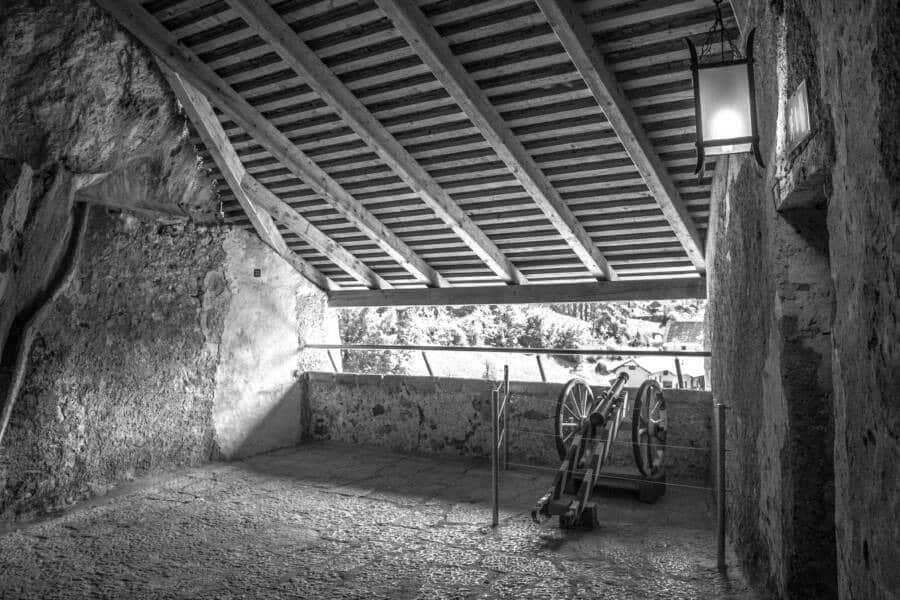
The third floor features an open terrace with a stunning view of the valley below and various defensive structures like murder holes, gun loops, and arrow slits.
The Torture Chamber of Predjama Castle
Predjama Castle’s torture chamber is one of its most chilling and historically significant features.
The torture chamber is located within the depths of Predjama Castle, accessible through a thick wooden door in the courtroom.
This secluded and ominous room was used to extract confessions, punish wrongdoers, and maintain order during a time when the rule of law was often enforced through fear and brutality.
Instruments of Torment
Inside the torture chamber, various instruments of torment are displayed.
- The Rack: This device stretched the victim’s body, causing excruciating pain as joints and muscles were pulled apart.
- Iron Maiden: A coffin-like structure lined with spikes, designed to pierce the victim when the door was closed.
- Thumbscrews: Small, portable devices that crushed the fingers or toes.
- Whipping Post: A simple yet brutal apparatus where victims were tied and flogged.

Legend of the betrayal
The chamber was likely employed during the time of Erasmus of Lueg, the castle’s most infamous resident, to punish those who betrayed him or opposed his rebellious activities.
Among the many grim tales associated with this room, one particularly dark legend speaks of a traitor within Erasmus’s ranks.
The traitor secretly betrayed him by providing crucial information about the castle’s defenses and Erasmus’s plans to the Habsburg forces.
Erasmus grew suspicious of the sudden shifts in the siege. After setting traps and tests, the traitor was finally discovered.
Furious and feeling deeply betrayed, Erasmus ordered the traitor to be brought to the torture chamber.
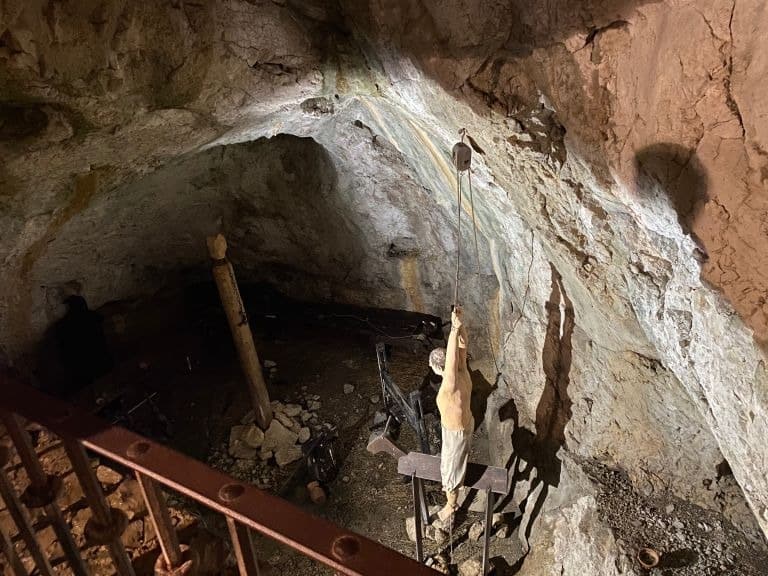
The traitor endured days of agonizing torture.
His bones were stretched on the rack, his fingers crushed by thumbscrews, and his flesh pierced by the iron maiden.
Each scream and plea for mercy was met with cold indifference.
Finally, the traitor confessed to his crimes, revealing the details of his treachery and the information he had passed to the Habsburgs.
The Predjama Castle in Game and Films
The castle’s unique setting and dramatic history have also made it a favorite in popular culture.
It has been featured in the game Counter-Strike: Global Offensive, the Jackie Chan film Armour of God, and Season 3 of The Witcher.
It even inspired author George R.R. Martin during his visit in June 2011.
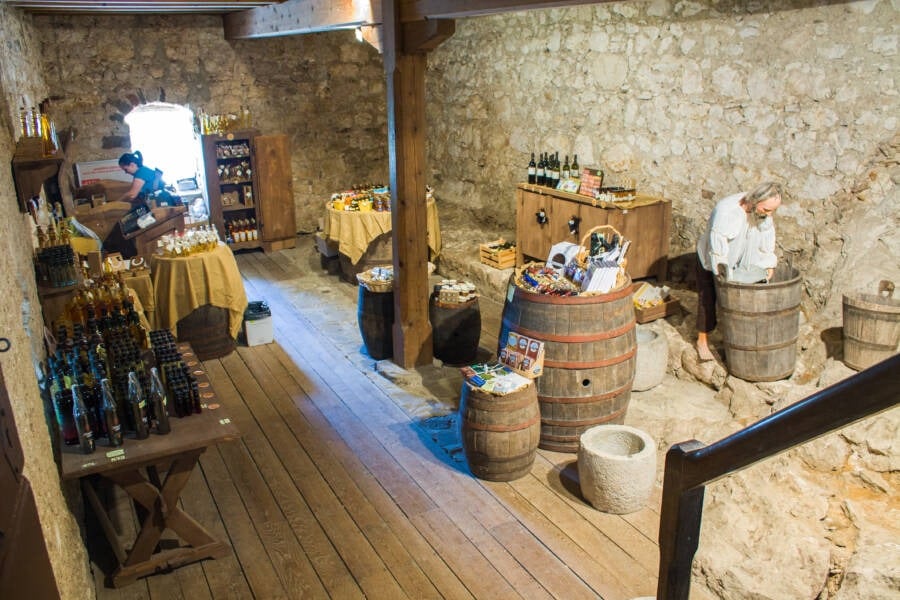
The Karst Caverns
The Karst Caverns are behind the Predjama Castle.
These caves feature limestone formations, underground rivers, and sinkholes.
The word “karst” comes from the name of the rocky plateau above Trieste.
These caves formed over thousands of years as slightly acidic water slowly dissolved the limestone, creating large underground chambers and tunnels.

The caves stretch for nearly nine miles, making them one of the largest cave networks in Slovenia.
In medieval times, these caves were not just natural wonders but also strategic assets.
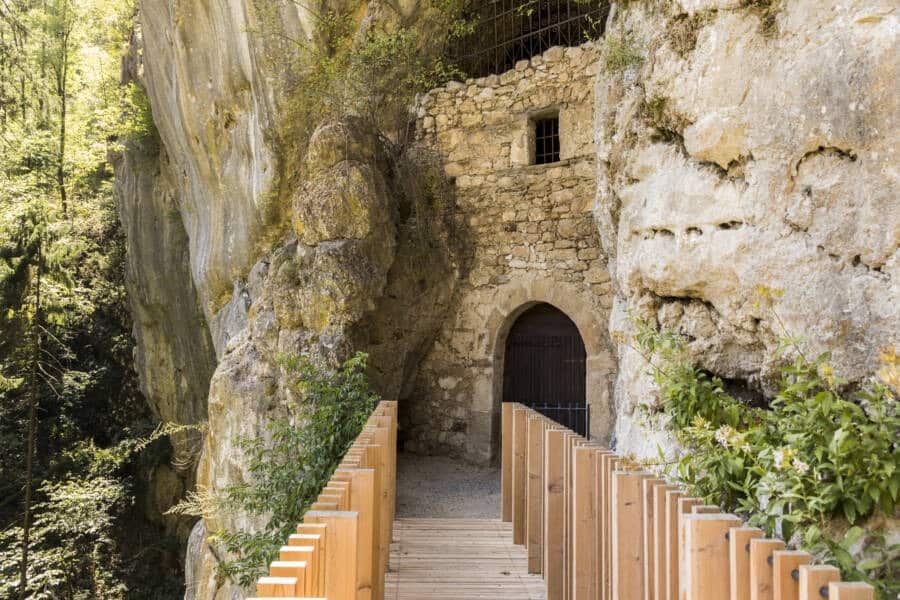
Erasmus of Lueg, a 15th-century knight, used a vertical shaft connecting the castle to the caves to smuggle supplies during sieges and continue his raids against the Habsburgs.
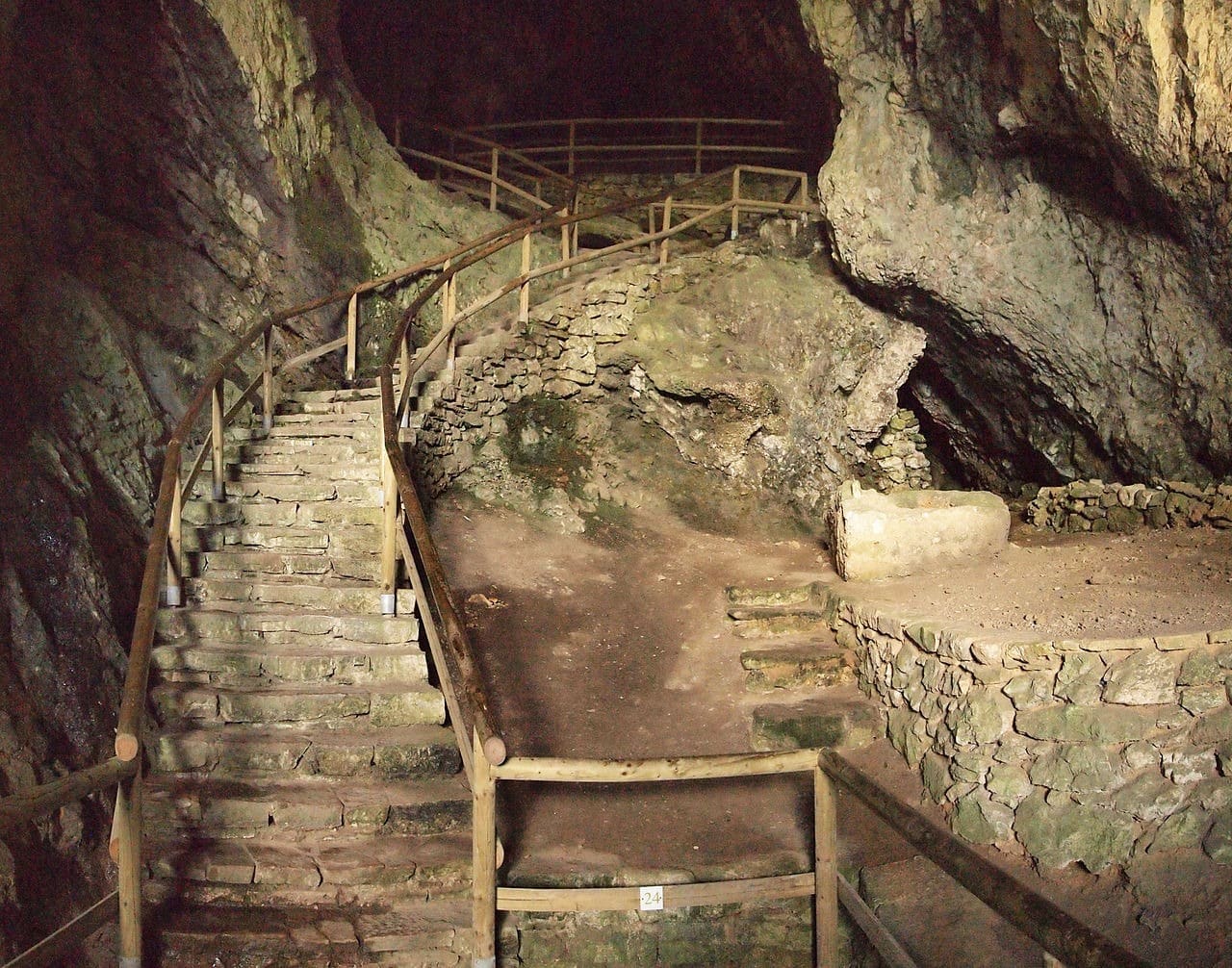
Today, visitors can explore the Karst Caverns safely, thanks to the installation of stairs and railings.
Inside, visitors will find stunning stalactites and stalagmites, underground rivers, and vast chambers.
The natural amphitheater-like cave beneath the castle is particularly impressive, with ancient rock formations creating a magical atmosphere.
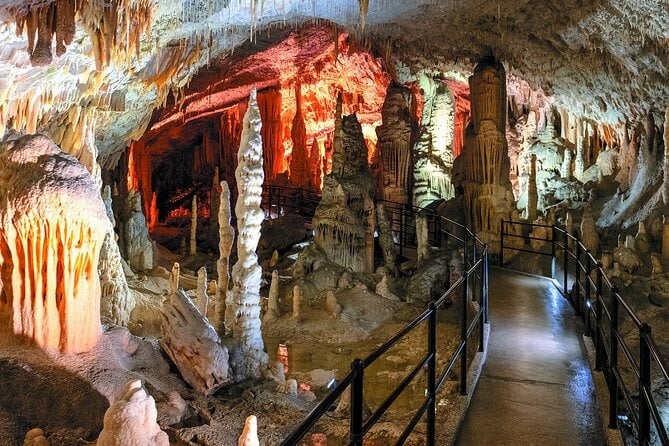
The Karst Caverns also support a unique ecosystem.
The constant temperature and humidity make it a perfect home for various species of bats, insects, and other cave-dwelling creatures.

